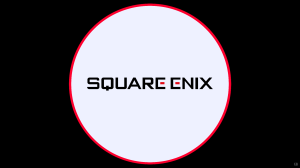Nvidia’s GeForce NOW has a big advantage over other game streaming services. While Stadia is currently struggling to make more games available, GeForce NOW allows players to stream and access games they already own on other services, giving it a much larger library. It’s a smart move, and one that could make game streaming far more appealing, but not everyone is happy with the arrangement, and it could lead to future difficulties. Raphael van Lierop of Hinterland Studio took to Twitter today to explain why The Long Dark is no longer for GeForce NOW users. According to Lierop, Nvidia never got permission from the developer, and it’s raising a lot of questions about the GeForce NOW service.
Videos by ComicBook.com
Nvidia’s GeForce NOW allows players to access their library of PC games from Steam, Epic, or Battle.net, and play them on any of their devices. The Long Dark is available on Steam, through a contract between Hinterland Studio and Valve. However, that contract says nothing about GeForce NOW, prompting Hinterland Studio to ask Nvidia to pull the game. According to Lierop, Nvidia offered Hinterland a free graphics card as an apology.
Lierop’s tweet raises some very good questions about GeForce NOW, and its long-term viability. Nvidia charges GeForce NOW users for the service ($4.99 a month for the Founders membership), which is where Lierop and Hinterland seem to take issue. In a follow-up tweet, Lierop explained that Nvidia is making money off the content that it’s making available to consumers, and it’s Hinterland’s right to decide whether or not they want to be a part of that library.
Sorry to those who are disappointed you can no longer play #thelongdark on GeForce Now. Nvidia didn’t ask for our permission to put the game on the platform so we asked them to remove it. Please take your complaints to them, not us. Devs should control where their games exist.
— Raphael van Lierop (@RaphLife) March 1, 2020
Naturally, many of GeForce NOW’s users disagree with this sentiment. GeForce NOW isn’t technically a gaming platform; instead, it’s a service that allows users greater access to the platforms they already own games through; players are essentially paying Nvidia to log into a remote computer to access their games. Those gamers are unhappy with the decision, as they have already purchased the titles they’re playing on Nvidia’s service.
It will be interesting to see if other developers take issue with GeForce NOW’s service as a result of Lierop’s claim. At the very least, this will likely prompt Nvidia’s partners to amend their distribution agreements to make it clear which games will be available through the GeForce NOW service.
Are you a GeForce NOW user? Should Nvidia have to get permission from individual developers before granting access to their games? Let us know in the comments or share your thoughts directly on Twitter at @Marcdachamp to talk all things gaming!








